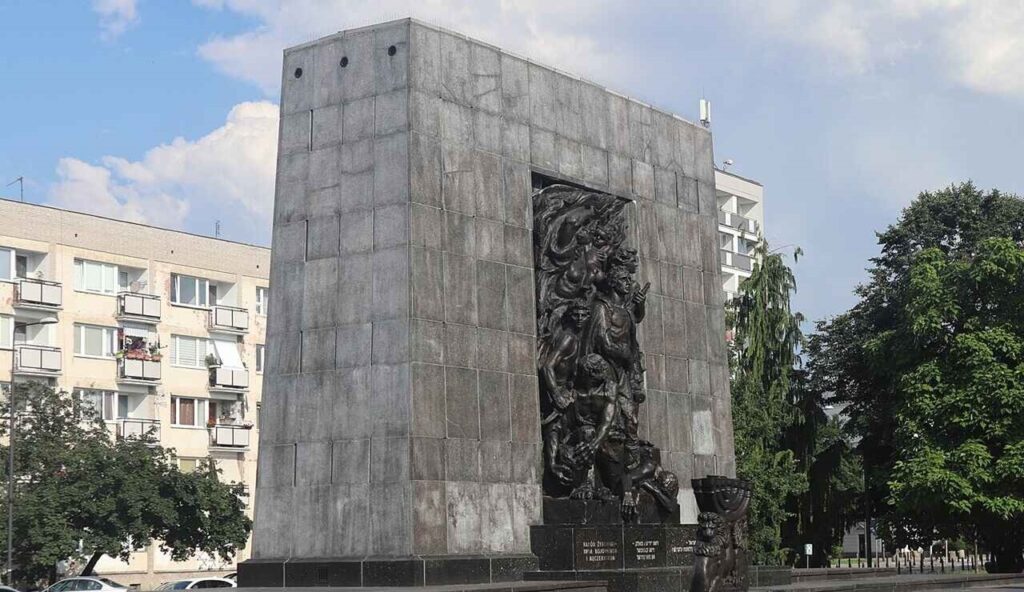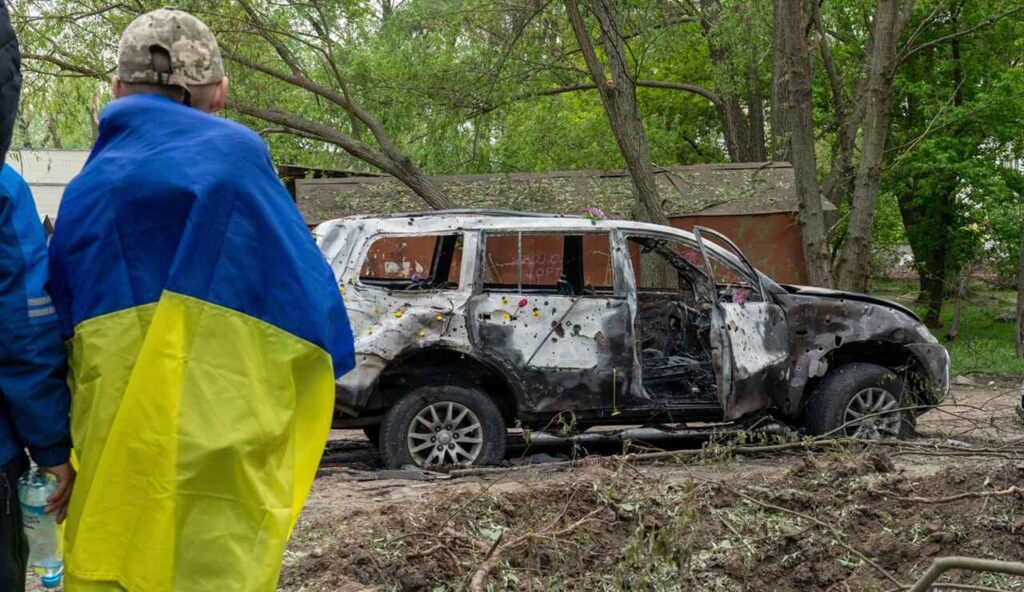
This Crushed Hitler: The Great 1943 Lancaster Bomber Operations over Germany
The 1943 Battles of the Ruhr and Hamburg realized heavy destruction of German industrial resources but only at a steadily rising loss ratio caused primarily by Luftwaffe Night Fighters.
The Lancaster bomber holds a special place of affection mingled with a great deal of pride in the hearts of British and Commonwealth citizens — feelings which perhaps find their parallel in the hearts of Americans toward the B-17 Flying Fortress. Just as the Spitfireepitomized the Commonwealth’s supreme spirit of defiance in the face of seemingly irresistible defeat, so the evening sight and sound of streams of Lancasters “heading out” toward the heartland of the German Reich was the ultimate translation of a war-weary people’s will to see the Nazi military and industrial machine — the source of colossal suffering for so much of the world — battered into oblivion.
With the Lancaster in fact, the RAF finally had a bomber with which it could wage war in Germany.
As told by R.S.G. Mackay in his book Lacaster in action, the introduction of H2S during 1943 — initially to Pathfinder Force aircraft then to Main Force — caused the first regular and prominent change in outline to the Lancaster. Since the set scanners extended below the rear fuselage, a half pear-shaped fairing was fitted. Made of perspex, the rear section was unpainted to allow the enclosed identification lights to be seen. H2S was a downward looking radar set based on a high power magnetron valve that received echoes more strongly from built-up areas than from flat countryside. The echoes received by the rotating aerial system were displayed on a cathode-ray tube that traced a representation of the countryside below, very nearly a map that could be traced on the cathode ray tube right through cloud cover.
The 1943 Battles of the Ruhr and Hamburg realized heavy destruction of German industrial resources but only at a steadily rising loss ratio caused primarily by Luftwaffe Night Fighters. To supplement the rear gunner’s visual search an arrow-shaped aerial was fitted below the rear turret. Under the code name Monica, this new device was a rearward looking radar set designed to provide warning of fighter aircraft in a 45 degree angle.
Noteworthy during the battle of Hamburg, “Window,” an initially very effective means of blinding Luftwaffe radar, both ground and airborne, completely paralyzed German night defenses. Window was used to put out the eyes of the defenders and H2S was used to find the target. Ha-burg was subjected to four main attacks, 3.095 sorties, dropping some 9,000 tons of bombs on the city—killing over fifty thousand people, destroying half the buildings, and leaving almost a million people homeless. British losses were 87 aircraft, 2.8%, which was much lower than the usual 6% losses experienced by Bomber Command when attacking Hamburg.
Window was aluminum foil stiffened with a black paper backing and cut into strips 30 centimeters long by 1.5 centimeters wide. The silvery side was coated with lampblack so the clouds of aluminum foil would not show up in the searchlight beams but would still reflect radar waves. Initially window was dispatched through any convenient aperture in the aircraft, however within weeks Lancs were fitted with a louvered box structure on the lower starboard side of the nose through which the Window was distributed by either the Flight Engineer or the Bomb Aimer.
By late 1943 Bomber Command was committed to regular deep penetration raids, the majority of sorties being flown by Lancasters, deemed to be the only heavy capable of striking targets while bearing acceptable loss-ratios. The early war decision to fit British bombers with .303 machine guns now meant that Lancasters were at a serious disadvantage when locked in combat with cannon armed night fighters. Unknown to Bomber Command the Luftwaffe’s Night Fighter arm had developed devices to home on both H2S and Monica, and developed schrage Musik, an upward firing armament. This new German device took a terrible toll of Lancasters during the winter and spring of 1944, culminating in the disastrous Mar. 30 raid on Nuremberg in which no less than 96 bombers were lost out of an attacking force of 795 aircraft.
When Bomber Command became aware of the Luftwaffe’s new homing devices, Monica was removed and air crews were ordered to switch off H2S when not in use. No overall Bomber Command defensive measure was made to counter attacks by the Luftwaffe’s new upward firing weapons which allowed the night fighters full rein in their use of schrage Musik. Most ventral turrets had been deleted from Mk I/III Lancasters, and from LM522 onwards meant the displacement of under-turrets was necessary in order to accommodate H2S equipment. Improvements in existing defensive turrets were made, and new turrets introduced. An automatic gun-laying apparatus (A.G.L.T.) was fitted to a number of FN20 rear turrets and was pioneered on operations during late 1944 by 49 Squadron. While found to be reasonably effective, war time distribution was limited to several units including 101, 460 and 635 Squadrons. The A.G.L.T. turrets carried .303 guns, whereas the up-dated FN82 turret bore a pair of .50s. From Rose Rice came a new .50 armed turret which was less cluttered internally and whose open-ended canopy offered much better escape for the gunner who, unlike his FN20 colleagues, could carry his parachute inside the turret. No similar improvements were made to nose or upper turrets of Mk I/III aircraft before 1945.
The invasion of Occupied Europe turned Bomber Command from the night raids on German industry to daylight attacks on German Ground forces in France. Lancasters of 5 Group were selectively marked with coloured fins, such aircraft being used as formation leaders of their relative units. 1 Group had a similar facility but concentrated it within 460 Squadron.
Full-scale production of G-H, a precise blind-bombing aid pioneered in late 1943 on Mk IIs, allowed its introduction on 3 Group aircraft during late 1944. G-H allowed for extremely accurate attacks even through 10/10 cloud cover. For daylight raids G-H equipped Lancs sported two parallel yellow bars on the fins and acted as formation/bombing leaders for non G-H aircraft. No. 3 Group carried out many successful raids during 10/10 cloud conditions both by day and by night, with G-H aircraft providing their own Pathfinder services.
By the last full month of war-time operations (April 1945) the dominance of the Lancaster within Bomber Command reached its peak, no fewer than 56 Squadrons being equipped with the type. Nos. 1. 3 and 5 Groups were fully equipped with Lancs. In addition, No. 8 (PFF) Group which commenced operations in August 1942 with mixed Lancaster/Halifax/Wellington Squadrons, flew only the Lanc as the heavy bomber element within its overall ranks. Apart from the all-Halifax equipped No. 4 Group only the Canadian No. 6 Group operated both heavies, and even here the Lanc equipped 10 of the 17 Squadrons in the Group.
This article by Dario Leone originally appeared on The Aviation Geek Club in 2019.
Image: Wikimedia.


